Sturdy corals defy global warming
So far, we’ve believed that reef-building corals around the world are hugely vulnerable to rising ocean temperatures and can suffer bleaching as a result. But, scientists recently discovered a coral species that can actually seem to adapt to warmer weather.
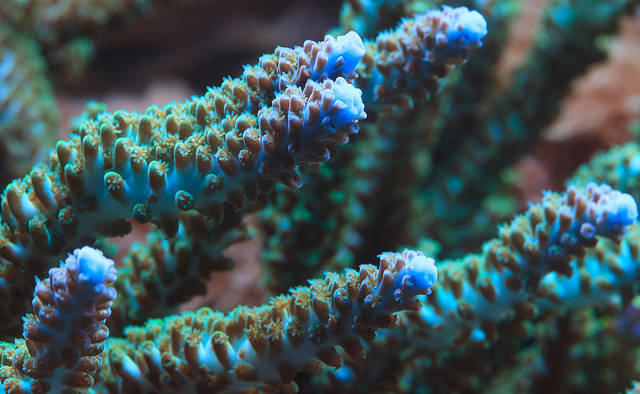
Not exactly Acropora hyacinthus, but another coral of the Acropora family (Photo credit: CC BY 2.0: Will Thomas/Forge Mountain Photography)
Remember your last trip to the sea? You probably recall how the water around you felt warmer the closer to the beach you were and colder the farther you swam out to sea. And while you can move from colder to warmer water and the other way round, corals cannot. They stay put in their surroundings. So, researchers decided to look at how the same coral species can deal with different water temperatures.
Along the coasts of American Samoa, coral Acropora hyacinthus lives and grows on the reefs. Water levels shift due to the tides, leaving the corals along the flatter beaches covered with less water during low tide. This water can be heated up more easily by the sun, periodically exposing the corals to a warmer environment.
Stephen Palumbi from the University of Stanford and his team collected both: Acropora hyacinthus corals from flatter areas and also ones from the deeper, cooler sea. Next, they put all the corals in so-called “stress tanks” where the scientists could deliberately alter water temperature.
When substantially heating the water in the stress boxes, the researchers made a crucial observation: the corals collected from the deeper, cooler sea died. But the ones collected from those exposed to periodically warmer areas survived. They were already used to warmer temperatures and changing temperatures and thus able to adapt, researchers concluded.
Palimbo states in a video: “Now, the real hope for the stress tanks is to take them elsewhere in the Pacific and find other corals that are just as strong as the ones we found here in American Samoa.”
Local biodiversity changes, but is not lost, study shows
With climate change and deforestation we typically focus on how biodiversity gets hit or disappears as a result. But a new study finds that biodiversity is not necessarily lost, but changes instead.
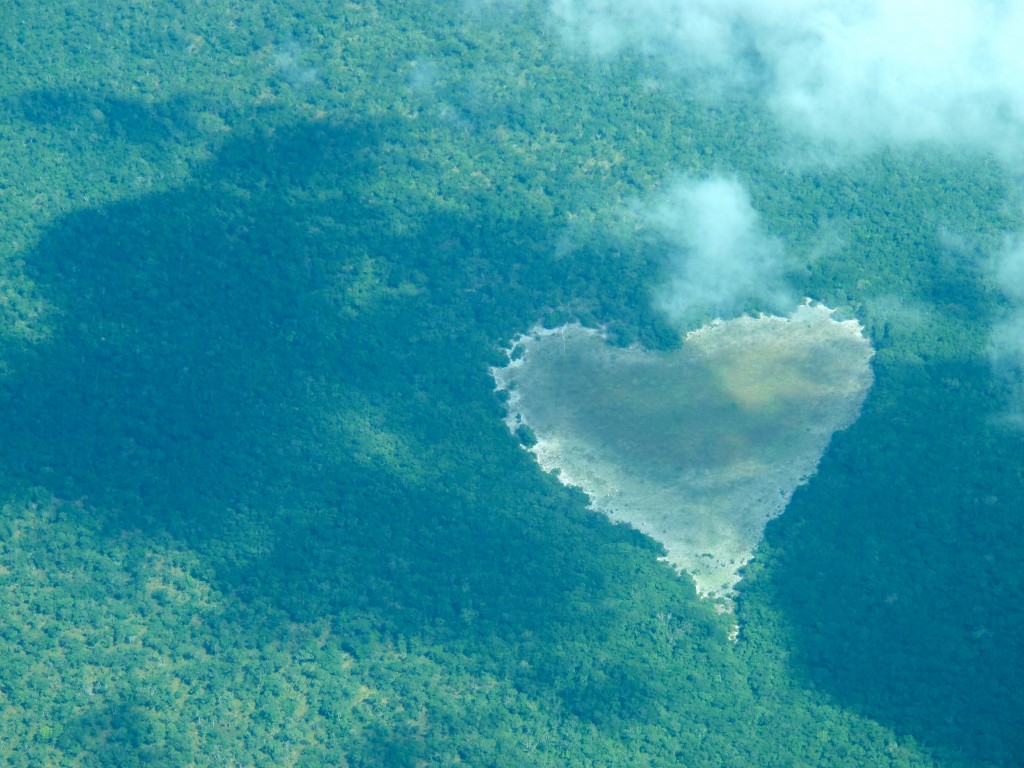
Forest in Northern Mozambique (Photo credit: CC BY 2.0: Maria Dornelas)
Maria Dornelas and her team from St Andrews University in Scotland investigated six million species living on land and in marine environments over the past 150 years. They found no distinctive pattern of species loss associated with any local community or ecosystem throughout this time. Instead they observed that species composition changed over time. The findings imply that a species is not necessarily under threat of extinction, just because it can’t be found in its “traditional” habitat any more. It may have simply been forced to migrate to another place – and not to its detriment. And this turnover of species in any given locale or community must have occurred faster than previously thought.
The researchers insist their findings do not dispute the fact that many species and habitats around the world are under threat. But they suggest that strategies to protect species should be revised to reflect the phenomenon of species turnover, which has so far been underestimated.
Creating a water filter from wood
1.1 billion people in the world don’t have access to safe drinking water. In fact, even though it’s 2014, we still have 1.6 million people dying from infections caused by the lack of safe drinking water and basic sanitation – 9 out of 10 of these are children under the age of 5.
For several years Rohit Karnik, a mechanical engineer at MIT, had been working on the development of membranes for water filtration. But during a conference in Israel, listening to someone talking about fluid motion in trees, inspiration struck.

*
Apart from water, of course, trees transport so called “sap”, a fluid enriched with nutrients, up and down their trunks. On it’s way through the xylem, the wooden part of the tree, either fluid gets filtered at many points (circled in red). Now, why not investigate if these tree-membranes are capable of filtering water for humans as well? No sooner thought than done.
Karnik and his team started out developing a very minimalistic, low-cost filter – the problem with existing filters is often that they either need energy or are not affordable for those in need. So, Karnik’s first filters were built by peeling off the bark and plugging the piece of wood into a tube. Not suitable on a large scale, but elaborate enough for testing filter properties.

Construction of water filter system using wood*
The team’ s results: These filters got 99,9 percent of pathogens out of the water. The xylem filters managed to eliminate Escherichia coli, the most common type of gut bacteria that can cause severe diarrheal diseases if present in contaminated water.
Using advanced microscope technology, the scientists even traced down, where bacteria where filtered: they all accumulated on the so called pits – membranes permeable for water – but not for the “larger” bacteria. Talking about size: the E. coli bacteria can be anything from 2 to 6µm in length. This is already quite small, but not the end of it when it comes to pathogens: viruses are almost a thousand times smaller than this. That is also where the xylem filters surrender: they don’t present an obstacle to anything smaller than 20 nm – a size comparable to that of the smallest viruses, the scientists report.
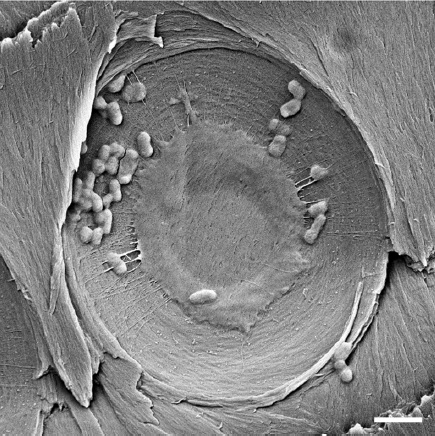
Pit membrane with accumulated E. coli bacteria. Scale bar: 2µm.*
To achieve a decent flow rate of 4 litres per day, researchers applied a pressure of 5 psi: “This value approximately corresponds to the pressure at the bottom of a 3 m column of water. Filtration will also occur at lower pressures, but at proportionally lower flow rates,” Karnik says. “The pressure of water supplied to households is typically 10 times this value. A container placed a few feet above the ground with a hose coming down to ground level will be able to generate sufficient pressure for filtration.”
Questions to be solved
Having this problem solved, there are still several left. “Can we store or dry sapwood xylem filters?” is one of the questions Karnik and his team are currently investigating. So far, to perform properly, filters have to stay wet all the time – once they’ve dried, they are useless. To safely get rid of such unusable or already “overused” filters, one way would be to burn them.
Also crucial for success of this filtration method is the type of wood used. For their experiments the team used the Eastern White Pine Pinus strobus, a tree that is abundant mostly across North America but not in those regions most in need of feasible water filtration: “We used the tree because it is common here, and it was easy to access. There are so many species of plants, and the question as to which endemic plants are suitable for making xylem filters in a particular area is certainly worthy of investigation,” Karnik writes.
Low cost solution in two years
Karnik’s idea is not yet feasible on large scales but he is optimistic: “This is a very new technology with lot of work to be done. A filter could take various forms, but one that is especially appealing is a compact device that simply attaches to a faucet, with a replaceable xylem filter inside it. It may take 2-3 years to develop the first prototypes for larger scale use, but I believe that there will be many developments to follow.”
*Credits for all images: CC BY: Boutilier et al. 2014, PLoS One 2014, doi:10.1371/journal.pone.0089934.g001
For what we risk biodiversity (2): Toilet paper
Author: Kerstin Schnatz
The tallest hardwood trees on earth are towering 90 meters and more in height in Tasmania. The island state 240 km South of the Australian mainland is not just famous with hikers and nature lovers – it also has a very strong timber industry. Now the Australian government wants to open more forest sites for potential logging.
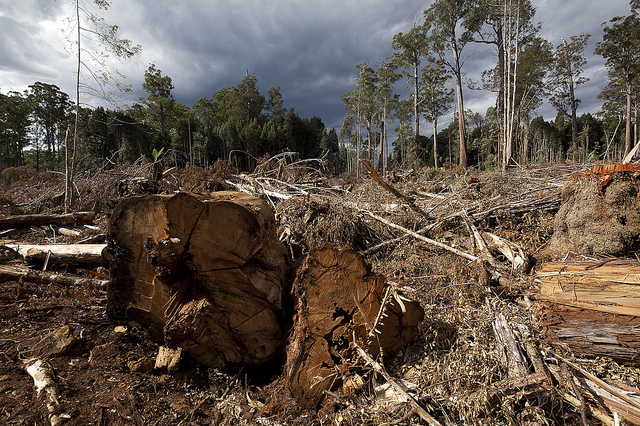
Picture from February 2012: A logging site close to the Tasmanian Wilderness World Heritage Area.
(Photo credit: CC BY NC SA 2.0: Ta Ann Truths)
Almost 50% of Tasmania’s land area is protected for a good reason: The ancient forests give a habitat to many threatened species such as the almost extinct Tasmanian devil or the endangered Tasmanian wedge-tailed eagle.
Now the worst nightmare of Australian environmental activists has come true: Their government has put in a pledge to the United Nations to remove 74.000 hectares of Tasmanian forest from world heritage listing. The very land had only been protected in 2012 within a larger area of 174,000 hectares, ending a decades long conflict between the timber industry and environmental groups. The reason? The relativele new Australian government that had been elected in 2013 finds the area not so special after all. Government speakers reckon that much of the area had been logged already anyway and should not have been considered for protection in the first place.
Naturally, environmental groups think of this otherwise stating that almost 93% of the area in question consists of precious old growth forests. They fear, that their government wants to open the doors for the Tasmanian timber industry – one of the most thriving branches of the tiny state’s economy.
Large international companies such as Malaysian owned veneer manufacturer Ta Ann have wood manufacturing mills in Tasmania. Many of those mills produce woodchips used for making writing paper, tissues or even toilet paper.
To proof how precious and needy of protection Tasmania’s forest are, the Wilderness Society released pictures of the area in question.
Harsher images paints the Tasmanian Leader of the Green party with his words stating in a television report by the national TV channel ABC : “Logging in a world heritage area is akin to the Taliban dynamiting millenia old religious statues.”
We all agree, that nature’s richness is precious and needs to be protected. But at the same time it sometimes “just happens” that this precious biodiversity is set at risk. To raise awareness for this contradiction, we started this little blog series, featuring examples of this phenomenon. See part 1 here. If you know similar examples, that fit into this series, please drop us a line in the comment box below.




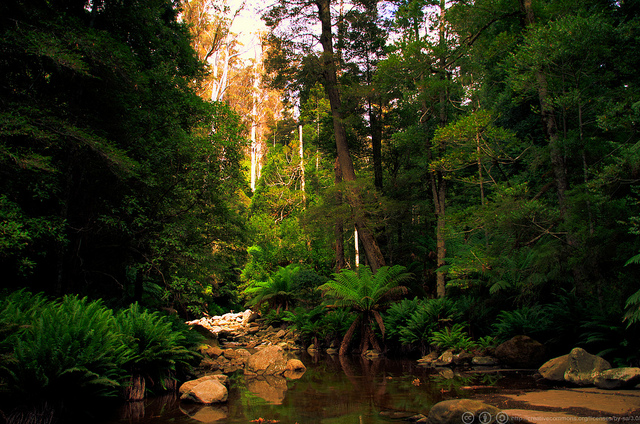




Feedback